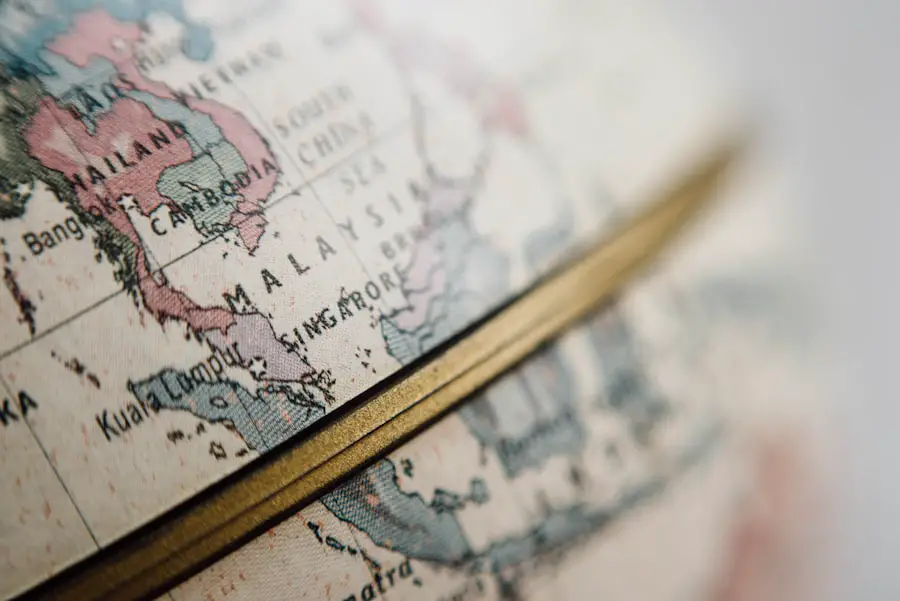Guatemala, a Central American gem, is renowned for its rich cultural heritage, stunning landscapes, and diverse ecosystems. The climate in Guatemala is as varied as its geography, influenced by factors such as altitude, topography, and proximity to the equator. The country experiences a tropical climate characterized by distinct wet and dry seasons, which play a crucial role in shaping the agricultural practices, tourism patterns, and daily life of its inhabitants.
Understanding the nuances of Guatemala’s climate is essential for travelers seeking to explore its vibrant cities, ancient ruins, and breathtaking natural wonders. The geographical diversity of Guatemala contributes significantly to its climate. The country features coastal plains, highland plateaus, and volcanic mountains, each with its own microclimate.
For instance, the lowland areas near the Pacific coast tend to be hot and humid, while the highlands, including cities like Antigua and Quetzaltenango, enjoy a cooler and more temperate climate. This variation not only affects weather patterns but also influences the types of flora and fauna found in different regions. As such, visitors to Guatemala can experience a wide range of climatic conditions within a relatively small geographical area.
Key Takeaways
- Guatemala has a diverse climate with distinct dry and rainy seasons, as well as unique cultural events and festivals throughout the year.
- The dry season in Guatemala lasts from November to April, with clear skies and warm temperatures, making it an ideal time for outdoor activities and exploring the country.
- The rainy season in Guatemala occurs from May to October, bringing heavy rainfall and lush green landscapes, but also the possibility of travel disruptions and limited outdoor activities.
- Semana Santa, or Holy Week, is a significant cultural event in Guatemala, featuring elaborate processions, religious ceremonies, and traditional food and music.
- Guatemala hosts various festivals and events throughout the year, including the Day of the Dead, Independence Day, and the Rabin Ajau beauty pageant, offering visitors a chance to experience the country’s rich cultural heritage.
The Dry Season: November to April
Weather Conditions
During this period, the weather is generally sunny and dry, making it an ideal time for outdoor activities and exploration. The temperatures vary significantly depending on altitude; in lowland areas, daytime temperatures can reach the high 80s Fahrenheit (around 30°C), while in the highlands, temperatures are more moderate, ranging from the mid-60s to mid-70s Fahrenheit (approximately 18-24°C).
Popular Activities
The dry season is particularly popular among tourists, as it coincides with many of Guatemala’s cultural events and festivals. The clear skies and pleasant temperatures create perfect conditions for exploring ancient Mayan ruins such as Tikal and Yaxhá or hiking up volcanoes like Pacaya and Atitlán.
Wildlife and Landscapes
Additionally, the dry season is an excellent time for birdwatching, as migratory species flock to the region. Travelers can witness the vibrant colors of tropical birds against the backdrop of lush green landscapes that remain from the rainy season.
The Rainy Season: May to October

In stark contrast to the dry season, Guatemala’s rainy season lasts from May to October. This period is characterized by heavy rainfall, particularly in the afternoons and evenings. While the mornings may start off sunny, dark clouds often gather by midday, leading to intense downpours that can last for hours.
The rain is essential for replenishing the country’s water supply and sustaining its rich biodiversity; however, it can pose challenges for travelers who are unprepared for sudden weather changes. Despite the challenges posed by rain, visiting Guatemala during this season has its advantages. The landscape transforms into a lush paradise, with vibrant greenery covering hillsides and valleys.
This is also the time when many flowers bloom, creating a picturesque environment that is perfect for photography enthusiasts. Additionally, fewer tourists visit during the rainy season, allowing for a more intimate experience at popular sites like Lake Atitlán or the ancient city of Copán. Travelers who embrace the rain can enjoy lower prices on accommodations and tours while experiencing a different side of Guatemala’s natural beauty.
Semana Santa: Holy Week in Guatemala
| Year | Number of Visitors | Revenue Generated |
|---|---|---|
| 2018 | 500,000 | 10 million |
| 2019 | 600,000 | 12 million |
| 2020 | 200,000 | 4 million |
Semana Santa, or Holy Week, is one of the most significant cultural events in Guatemala, celebrated with fervor and devotion throughout the country. Taking place in the week leading up to Easter Sunday, this religious observance showcases a unique blend of indigenous traditions and Catholic practices that have evolved over centuries. The streets come alive with vibrant processions featuring elaborate floats adorned with religious icons, while local artisans create intricate alfombras (carpets) made from colored sawdust, flowers, and other materials that line the streets.
In cities like Antigua, Semana Santa reaches its zenith with grand processions that attract thousands of visitors each year. The atmosphere is charged with emotion as participants dress in traditional robes and carry heavy wooden sculptures of Christ and the Virgin Mary through the cobblestone streets. The combination of solemnity and celebration creates a captivating experience for those who witness it.
The alfombras serve not only as beautiful decorations but also as expressions of faith and artistry, reflecting the community’s dedication to this sacred week.
Festivals and Events
Beyond Semana Santa, Guatemala hosts a myriad of festivals and events throughout the year that celebrate its rich cultural heritage. One notable event is the Day of the Dead (Día de los Muertos), celebrated on November 1st and 2nd. This festival honors deceased loved ones with colorful altars adorned with flowers, candles, and traditional foods such as tamales and pan de muerto (bread of the dead).
In towns like Santiago Atitlán, families gather at cemeteries to clean gravesites and share stories about their ancestors, creating a vibrant atmosphere filled with music and laughter. Another significant celebration is La Feria de la Virgen de la Asunción in Guatemala City, held in mid-August. This festival honors the patron saint of the capital city with parades, traditional dances, and fireworks.
The streets are filled with vendors selling local crafts and delicious street food, allowing visitors to immerse themselves in Guatemalan culture. Each region has its own unique festivals that reflect local customs and traditions, making it an exciting time for travelers to experience the country’s diverse cultural tapestry.
Wildlife and Nature

Guatemala’s diverse ecosystems provide a habitat for an impressive array of wildlife. From tropical rainforests to cloud forests and coastal mangroves, the country is home to numerous species of birds, mammals, reptiles, and amphibians. Birdwatchers will find paradise in Guatemala; over 700 species have been recorded here, including the resplendent quetzal—national bird of Guatemala—known for its striking plumage and elusive nature.
The country’s national parks and protected areas are vital for preserving this biodiversity. For instance, Tikal National Park not only showcases ancient Mayan ruins but also serves as a sanctuary for howler monkeys, jaguars, and countless bird species. Similarly, Monteverde Cloud Forest Reserve offers a unique ecosystem where visitors can observe rare flora and fauna while hiking through misty trails.
Engaging with Guatemala’s wildlife provides an opportunity to appreciate its natural beauty while promoting conservation efforts that protect these vital habitats.
Best Time for Outdoor Activities
When planning outdoor activities in Guatemala, timing is crucial due to its distinct wet and dry seasons. The dry season from November to April is generally considered the best time for hiking volcanoes like Pacaya or Acatenango due to favorable weather conditions. Clear skies allow for breathtaking views from summits while minimizing risks associated with slippery trails during rain-soaked months.
For those interested in exploring Guatemala’s lakes or rivers through kayaking or paddleboarding, both seasons offer unique experiences. During the dry season, Lake Atitlán’s waters are calm and inviting; however, during the rainy season, the lake’s surroundings come alive with lush vegetation that enhances its beauty. Wildlife enthusiasts may prefer visiting during the rainy season when migratory birds are present in greater numbers.
Tips for Traveling During Different Seasons
Traveling in Guatemala requires some preparation based on seasonal variations. During the dry season, it’s advisable to pack lightweight clothing suitable for warm weather but also include layers for cooler evenings in highland areas. Sunscreen and hats are essential due to increased sun exposure during this time.
In contrast, if visiting during the rainy season, waterproof gear becomes indispensable—waterproof jackets and shoes will help keep travelers dry during unexpected downpours. It’s also wise to plan outdoor activities for early mornings when rain is less likely to occur. Additionally, travelers should remain flexible with their itineraries; sudden weather changes can affect travel plans but can also lead to unexpected adventures.
Understanding Guatemala’s climate enhances any travel experience by allowing visitors to appreciate its natural beauty while participating in cultural events throughout the year. Whether exploring ancient ruins under sunny skies or witnessing vibrant festivals amidst lush landscapes after rain showers, each season offers unique opportunities for discovery in this captivating country.
When planning the best time to travel to Guatemala, it’s important to consider the weather and climate of the region. According to a recent article on TakeTravelInfo, the best time to visit Guatemala is during the dry season, which typically runs from November to April. This is when you can enjoy sunny days and comfortable temperatures, making it ideal for exploring the country’s stunning landscapes and vibrant culture.
FAQs
What is the best time to travel to Guatemala?
The best time to travel to Guatemala is during the dry season, which runs from November to April. This is when the weather is most pleasant and there is less chance of rain.
What is the weather like in Guatemala during the dry season?
During the dry season, Guatemala experiences warm and sunny weather with little to no rainfall. Temperatures are comfortable, making it an ideal time for outdoor activities and sightseeing.
When is the rainy season in Guatemala?
The rainy season in Guatemala typically runs from May to October. During this time, the country experiences heavy rainfall, particularly in the afternoons and evenings.
What are the popular tourist attractions in Guatemala?
Some popular tourist attractions in Guatemala include the ancient Mayan ruins of Tikal, the colonial city of Antigua, Lake Atitlán, and the vibrant markets of Chichicastenango.
Are there any cultural events or festivals in Guatemala that are worth experiencing?
Yes, Guatemala is known for its vibrant cultural events and festivals. The Semana Santa (Holy Week) celebrations in Antigua and the Day of the Dead festivities in Santiago Sacatepéquez are particularly popular and worth experiencing.
